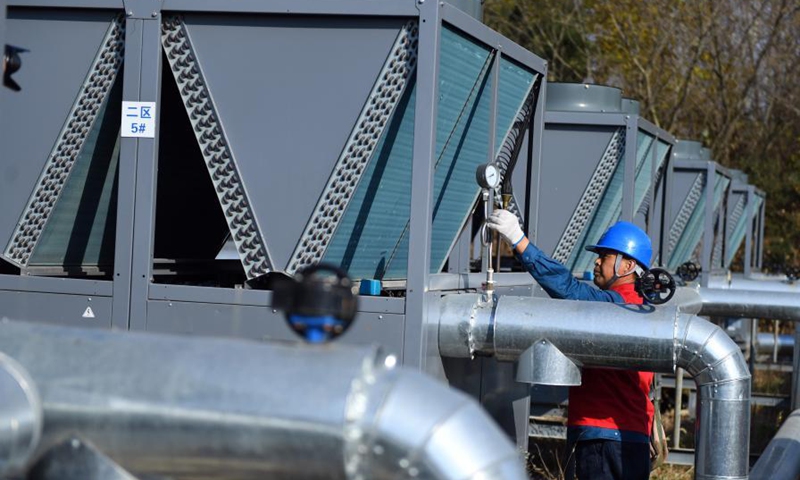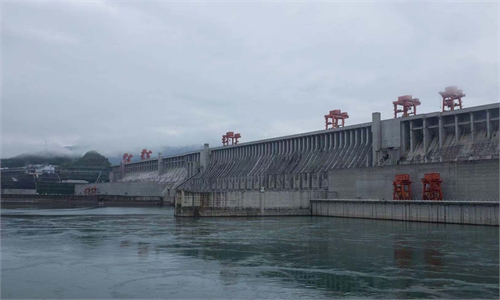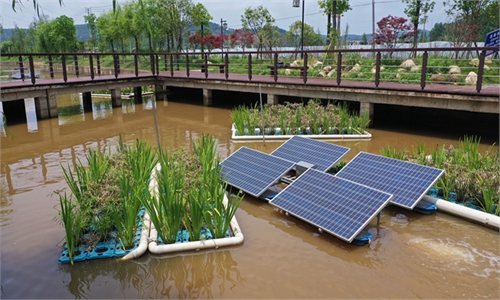
A technician checks the power supply lines at a heating station with clean energy at Wendeng district in Weihai, east China's Shandong Province, Nov. 12, 2020. Shandong launched a campaign to promote a shift from coal to electricity for 358,400 households during its heating season in 2020, which will save 270,000 tonnes of standard coal and reduce emission of 680,000 tonnes of carbon dioxide in the heating season. (Xinhua/Zhu Zheng)
The key technology research and demonstration project overseen by the Hebei Provincial Bureau of Coal Geology for hot dry rock (HDR) resources in Tangshan, Hebei Province, successfully generated power from HDR resources through experiments for the first time in China recently, laying a solid foundation for the development and utilization of the clean energy, according to media reports.
HDR is an internationally recognized form of clean energy, in which is the heat that exists and stores in the rock and is known as "the warmth from Mother Earth," the Guangming Daily reported on Tuesday, noting that HDR is an important direction for the development and utilization of future heat resources as HDR is an abundant, efficient resource with a long lifespan.
In 2019, researchers from the Hebei Provincial Bureau of Coal Geology successfully discovered buried hot dry rock in the Beijing-Tianjin-Hebei region at a depth of 3,965 meters below surface in Tangshan, achieving a major breakthrough in the exploration of hot dry rocks in China, and potentially tapping into prospective resources equivalent to 7.8 billion tons of standard coal.
The principle of generating power from HDR resources is to convert underground thermal energy into electricity through engineering and technical means, the Guangming Daily reported, citing Zhang Guishuang, deputy director of the Hebei coal geology bureau.
The Beijing-Tianjin-Hebei region is under great pressure to improve its environmental protection standards, with demand for clean energy keeps growing, according to the newspaper, citing Wu Qiang, an academician of Chinese Academy Engineering.
He added that the breakthrough in utilizing HDR resources will play a positive role in promoting the improvement of clean energy supply system in the Beijing-Tianjin-Hebei region and even the whole country to help achieve the country's carbon-peak and carbon-neutralization goals.
The Hebei Provincial Bureau of Coal Geology will adopt this latest success as the basis to build a national-level HDR development and research demonstration base to promote the industrial use of the heating, and provide technical support for the large-scale commercial development and utilization of HDR resources by utilizing the advantages of locations and demand, media reported.
Global Times



